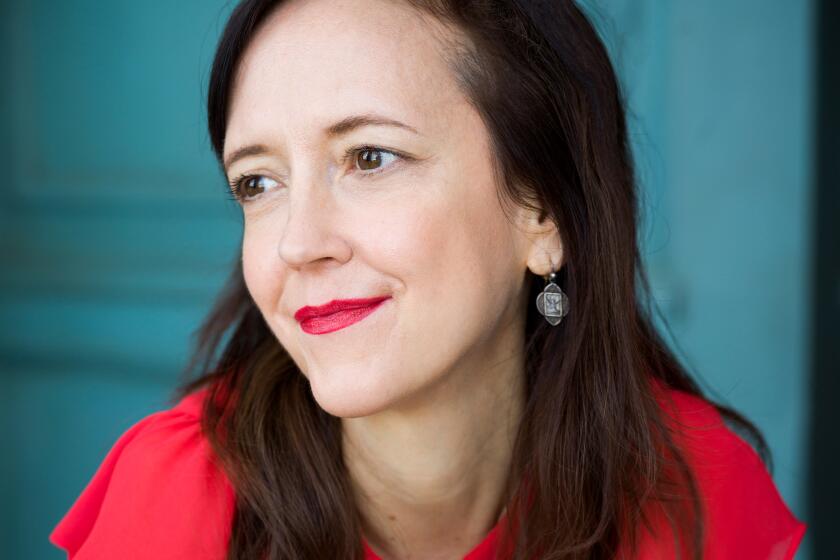Won’t You Come Home, John Dewey?
- Share via
For much of its history, American education has seemed more like a battleground between warring factions than an evolving and cumulative field of increasingly refined concepts and methods.
On one side we get books by E.D. Hirsch and Diane Ravitch blaming the progressive tradition itself, with its concern for process and student-centered activity, for the current failings of our schools. On the other side we get books by writers like Alfie Kohn blaming traditional elements of our system -- the overemphasis on testing, the segmentation of knowledge into subjects and textbooks, and passive modes of instruction.
If this were merely a battle of the books, a remedy would not be as urgent. But students, parents and teachers are constantly caught in this crossfire, or, to switch the metaphor, knocked about by the pendulum swings between the two extremes. The most frustrating part of this situation is that it is all so unnecessary. Each side has seized on only part of the cycle that generates real learning and urged it upon us as the entire solution. Instead, there should be a dialogue between individual experience and cultural symbols, between self-expression and teaching the basics.
One of the reasons this continuing conflict is so heartbreaking is that, around the turn of the last century, John Dewey was able to create resolutions both in a philosophic and practical sense. He looked out on an educational landscape torn between similar apparently competing philosophies. One group centered on the notion of “child-study” and the person of G. Stanley Hall. This group had a Rousseau-like sentimentality about nature and children, and it was more concerned with what it saw as health and wholeness than with intellectual growth.
On the other side was a group that stressed high academic achievement as defined and organized by curricula and textbooks, led by William Torrey Harris, U.S. commissioner of education. In this view, the standard curriculum -- arithmetic, geography, history, grammar and literature, the “five windows of the soul,” as Harris called them -- rescued the young mind from its immediate narrowness.
Instead of enlisting on one side or the other, Dewey, in a crucial 1902 article, “The Child and the Curriculum,” conceptualized each position so that it would no longer seem a matter of the child versus the curriculum.
Dewey’s crucial point was not merely that neither side was right, but that the problems were created by the polarization itself, by turning a dynamic process into hardened, static oppositions. His solution was to stop thinking of the child’s experience as also something hard and fast, and instead see it as something fluent, embryonic and vital. Experience without concepts is shallow and stagnant; similarly, concepts without immediate connections to experience are inert and useless.
Consider this: I was taught the multiplication tables in a rote way many years ago. The tables were given to us on a piece of cardboard, and we memorized each table and recited them in front of the teacher. My children, by contrast, studied the concept of multiplication by working on a chain of beads. Both they and I could write down the answer “49” on a paper-and-pencil test that asked “7 x 7= ?” But our actual knowing -- both the process and the extent -- was quite different.
Learning the multiplication tables is a favorite instance of those who argue that children have to learn “facts” before they can really think. Surely children will have to memorize the tables, but if they also understand what they are memorizing they will be better able to grasp the meaning and uses of that knowledge.
If the kind of re-forming of education suggested here existed only in the pages of John Dewey, it would be one more utopian dream. But Dewey himself was able to realize many of his ideas in his laboratory school at the University of Chicago from 1896 to 1903. Indeed, there is an entire tradition of mediating this self-destructive conflict in schools, stretching from Ralph Waldo Emerson’s “American Scholar” address to some of the more intellectually minded educators of the 1960s and ‘70s, like John Holt and George Dennison. There have been successful embodiments on a small scale, such as the schools of Bronson Alcott and of Henry and John Thoreau, bohemian schools such as the Walden School and the City & Country School, the First Street School of the 1960s and the schools created by Deborah Meier today.
The choice is still ours to break this cycle of breaking the cycle, of setting the child against the curriculum, of experience against symbols, and to integrate these “opposites” into a truly mindful education.
Martin Bickman, professor of English at the University of Colorado, Boulder, is author of “Minding American Education” (Teachers College Press, 2003).
More to Read
Sign up for our Book Club newsletter
Get the latest news, events and more from the Los Angeles Times Book Club, and help us get L.A. reading and talking.
You may occasionally receive promotional content from the Los Angeles Times.










